|
In this blog post, we answer the question “what is reverse marketing?” and discuss the pros and cons of using reverse marketing for your business. We will also provide tips for using reverse marketing effectively. What is reverse marketing?Reverse marketing is a type of marketing when customers look for the brand, products, or services rather than the business searching for the customer. Traditional or standard marketing usually involves marketing campaigns that reach out to their target audience, in an attempt to sell their product or service. Reverse marketing, however, can involve campaigns that raise brand awareness but don’t seek to generate leads directly from the campaign. A brand might, for example, advertise its brand rather than its products on TV or in magazine publications with the objective of raising awareness of the brand. When a customer has a need for what they offer, they will then approach the company that ran the advertising campaign. Examples of reverse marketingAs a customer, Walmart has been known to do this often with its suppliers. Rather than being approached by suppliers trying to sell their products, Walmart actively seeks brands that can make or produce products, potentially at lower costs than the competition. Well-known brands such as Coca-Cola and Mcdonald's often use reverse marketing by advertising the brand. By doing this, retailers who might stock drinks and hungry consumers are more likely to relate those brands to what they offer. When they are looking at what drinks to stock or how to fill those hungry tums, those brands might be the first thing that springs to mind. Orabrush is another example of a company that has used reverse marketing successfully. Their brand awareness campaign on YouTube has been linked to Walmart contacting them to purchase their products. Prefer to watch a summary video?Feel free to carry on reading, or watch the video summary below. Advantages of reverse marketingReverse marketing builds greater loyalty from customers who are more likely to spend more and become long-term loyal clients. Think of it this way - if someone is so keen to approach you to buy from you then there is a high level of trust and confidence in your brand and, in many cases, the customer is what’s often referred to as a brand advocate (someone who is so bought into your brand that they rarely, if ever, consider alternatives). With traditional marketing, a lot of brands can use aggressive tactics that involve telemarketing, email marketing and proven and very direct sales processes to get sales, but they can be intimidating and off-putting for many potential customers. Reverse marketing, however, means that the customer approaches a brand that they trust and like or love. They are more comfortable with the brand than they might be with a more direct email and telemarketing campaign. Feeling comfortable with the brand is more likely to build loyalty and the higher the trust, the more they are likely to spend. They are also more likely to tell friends and family or business contacts about what you offer - leading to more effective reverse marketing. Disadvantages of reverse marketingReverse marketing can require a lot of time, effort and money. Building up a brand - and awareness of a brand isn’t easy, and it doesn’t happen overnight. Even when you have built up awareness, it doesn’t mean that a potential client will consider you. In sales and marketing, I often tell clients that it’s not just about interacting with a potential customer and building trust, you also need to be at the front of their mind when they are ready to buy. Take cars as an example. If someone buys a new car every 3-4 years then a car manufacturer doesn’t just need to build up awareness of their brand over the long-term, they also need to be at the front of their mind at the time when they are looking to buy a new car. Marketing to that customer just after they have bought a new car is less effective than it is marketing to them when they are actively looking to buy. We’ve seen businesses contact potential customers when they aren’t ready to buy but then they don’t follow up or continue their marketing campaign later when the customer might be in buying mode. Is Reverse marketing the way forward?I’ve personally been in sales and marketing for around 25 years (I’ve almost stopped counting how many years) and, during this time, I’ve heard the arguments for the direct approach and the “let the customer come to you” or reverse marketing approach. And, without sounding like a politician, the best approach is a blend of both. It also depends on your line of business, the industry dynamics, how big your budget is and how aggressive or direct you decide to be with the traditional marketing approach. Before a customer buys from you, they need to trust the brand. Without that level of trust, they either won’t buy or they’ve been effectively forced to “sign up” to what you offer. However - even with the highest level of trust, it doesn’t mean they will buy. I’ve often told clients that “if you don’t ask for the order, you risk not getting it”. This means having to use a more direct approach in the right way - and at the right time. To achieve sales and marketing success, a blend of reverse marketing and traditional or normal marketing is needed. You can succeed by just using one of them and they are both proven to be effective, but combining the two leads to better chances of success. At Think Twice Marketing, a large number of our fabulous customers are from referrals and word of mouth. Having happy customers or brand advocates is the ultimate way to go but we still actively reach out to our target audience with lead generation campaigns as part of an overall marketing strategy. How to create a reverse marketing planA reverse marketing strategy or plan should be part of a wider marketing strategy that includes a range of sales and marketing activities to grow the business.
Make sure you are clear on your brand message, who your target audience is and where they “hang out” or how you can reach them. This should be done before creating a marketing plan with campaign activities. The marketing plan should include activities that have the highest ROI (return on investment). Make sure you are clear on what campaigns you should run that will help raise your brand awareness as much as possible and in the most effective way. If you need help creating a marketing plan, we can help. At Think Twice Marketing, we use a proven process that involves the 3 core elements (defining your target audience, differentiator and message) before creating a clear, effective marketing plan for growing your business, and your brand. Contact Think Twice Marketing for a free discussion to find out more. In this blog post, author and marketing expert Darren Hignett talks about the importance of building trust as part of the sales and marketing process. How to build trust and generate more businessWould you buy from someone you don’t trust?
With so many scams and businesses not delivering to expectations, we have learned over time to buy only from people and brands that we trust. This makes sense. The problem is that, as marketers and business owners, we often underestimate how important it is to acquiring customers and generating sales. As customers ourselves, we don’t buy a product or service unless we trust the person or the brand, but when we get busy running marketing activities, we forget or ignore how important it is for generating sales. Take a simple one-off marketing campaign. Many businesses are often disappointed with email, telemarketing or advertising campaigns that haven’t got the results that they had hoped for. Like all good marketers, they start to look at the insights to see what’s happened. Maybe they got plenty of impressions and clicks in their ad but no conversions, so the website isn’t getting results. So they start making changes to the landing page. Or maybe their email campaign had high open rates but no clicks, so the call to action in the email isn’t working. More changes are needed. This is all good stuff, but while we are busy looking at the metrics, it’s easy to overlook what is potentially the real reason the one-off marketing campaign didn’t work. The real reason their campaign failed (drum roll…) was due to a lack of trust. But how can that be, I hear you say? How can a business with a professional brand and quality products suffer from a lack of trust? When I say trust, I’m not suggesting that their campaign looked dicey or deceptive, or that they were promising something that looked overly exaggerated. The lack of trust I’m referring to is simply that the potential customer, who received their marketing campaign message, doesn’t know the brand or the person selling well enough to want to buy from them. You might call this familiarity – “sorry I don’t know who you are, so I’d rather not buy from you”, but it’s very much about knowing enough about the business, the seller and/or the brand to trust them. You hopefully noticed earlier how I used the wording “one-off campaign”. That’s for a very good reason. You can’t build trust with one email shot or within 2 minutes of talking to someone at a business event. A business might send out an email campaign to a thousand recipients from an email list that they bought from a third party. Those thousand recipients have either never heard of the brand or know very little at all about them. Sending a single email to someone who doesn’t know the brand has got a very low chance of being a success, even with the best content copy in the world. Whether it’s networking, social media, telemarketing, email marketing or something else, trust needs to be built up. There are various articles as well as research that show that most potential customers need to interact with you or your brand on average 5-7 times before they commit to making a purchase. Let’s think about that for a second… how many times do you approach or interact with a potential customer before giving up? There’s no point beating on the door of someone who isn’t going to buy from you, but that doesn’t mean you should give up after the first point of contact with them. If you aren’t sure how many times you approach or interact with someone, let’s look at what others do… 80% of purchases are made after 5-12 interactions* 48% of salespeople never follow up after the FIRST contact And only 10% of salespeople will make more than 3 ‘contacts’ These numbers show how businesses (or in particular, those in sales and marketing) aren’t doing enough to build trust. 80% of the business comes after 5 interactions, yet around half don’t even interact twice with a customer. And that’s the real reason why a one-off campaign might have failed. And then there’s the other form of trust… Trust builds over time, but it also builds with credibility. If your product has an average rating of 1-star on a website after a thousand reviews, no amount of time is going to give the consumer the confidence that your product is a must-buy for them (“Look Cassandra, this product has a thousand poor ratings, let’s by that one!”). On the other hand, you can speed up the process of building trust by using social proof such as positive reviews and recommendations. The more positive reviews and social proof you have, the more someone is going to trust you. Another way to build up trust is by offering a trial or a sample of what you offer. This reduces barriers to sales by allowing potential customers to see if what you offer is genuine, and in line with their expectations. Here are some ideas for ways to build trust: - Use words in your marketing such as ‘proven’ or ‘money-back guarantee’ - Grow your 5-star ratings and communicate it to your audience - Offer a trial or a sample of what you offer - Ask for recommendations - Tell people how long you have been established or how many customers you have served Summary As you can see, trust is key to someone buying. Before you go live with your advertising campaign or click send on your email campaign, ask yourself if you are doing enough to build and develop trust. After all, it could be the primary reason you didn’t get the results you expected. Need help? In my book Psychology in Marketing and Sales, I talk about building trust as well as the use of various tactics that you can use to increase sales. Make sure to grab a copy. If you need help with your marketing and building trust with your target audience, get in touch with Think Twice Marketing. Thanks for reading! I trust you found it useful… *https://jmjdirect.wordpress.com/2010/01/14/how-many-contacts-does-is-take-to-make-a-sale-follow-up-is-the-key/ In this blog post, we discuss the importance of lead generation strategies. If you have any questions or need any help with your lead generation strategy then get in touch. How To Generate Leads Using Lead Generation StrategiesLead generation is frequently misunderstood and under-valued when it comes to growing a business. The term “lead generation” doesn’t help as it’s not clear to many business owners and start-ups as to what exactly it means. In this blog post, we go through what a lead generation strategy is, and how you can use lead generation to increase your sales. If you would like help with your lead generation then get in touch for a free consultation to see how we can help. What Is a Lead Generation Strategy?A lead generation strategy is a marketing and sales technique used to generate leads for a product or service. It’s based on the premise that to get sales, you first need to have a number of prospects (also known as leads) that will buy from you. Finding prospects is, as the phrase goes “generating leads”. There are varying levels of leads such as cold leads (unlikely to buy or not enough information to know their situation), warm leads and hot leads (ready to buy or are certainly expressing a high level of interest in what you offer). A lead generation strategy involves a plan (and one or more sales and marketing campaigns) to generate leads. Lead generation strategies are often effective because they target people who want what you have but don't know about it yet. Lead Generation Statistics and Fast FactsBefore we get into more detail on how to generate leads, here are some quick facts to consider: - In the United States alone, there are over 50 billion dollars spent annually on lead generation. - The average cost of a qualified lead is $25. - The average conversion rate for a qualified lead is 10%. - Lead generation can be done through many different sources, such as social media and email marketing campaigns. Qualifying Your LeadsA qualified lead is one that you believe is looking to potentially buy from you. If you have 200 email addresses of people who could buy your services but no other information then these are cold - or unqualified leads. If, however, you establish contact with those people in whatever way, you can find out how serious they are about buying. Some of those leads can be removed from your list, while others can be considered as qualified leads. A lead is qualified when they meet your criteria. Make sure you have a set list of qualifications before generating leads because it will be easier to turn them down if they don't qualify than after you have invested time and effort into them. Using PPC to Generate LeadsLead generation strategies are the most effective way for companies to gain new business. There are many different ways that a company can generate leads, but one of the best is by using Pay Per Click (PPC). PPC, also known as pay-per-click advertising is a form of internet marketing that involves the advertiser paying for each click on their ad by potential. A Google Ads campaign, for example, can be used to promote a product or service when someone is actively searching for that service. A hotel in Manchester, for example, might set up a Google Ads campaign so that the advert for the hotel appears when someone searches for “hotels in Manchester”. Using Email to Generate LeadsEmail Marketing can play a critical role in the lead generation process. It can either be used to generate leads or by nurturing prospects and building up the relationship with them so that they will go from being a lead to becoming a paying customer. Lead Generation Strategies can be used to generate leads for a variety of businesses, and they are especially useful when you're just starting out because it's one of the cheapest ways to get customers quickly. Different channels for generating leadsLeads can be generated by many different channels, including sales leads from trade shows and other events, advertising campaigns (such as PPC campaigns) or public relations efforts that attract large numbers of potential customers, and even from social media marketing. Leads can also be generated through methods such as cold calling and direct mail. Cold-calling can be difficult for many businesses for various reasons and although it’s considered by many to be outdated compared to digital marketing, it can still be effective for many industries. How Much Does Lead Generation Cost?Lead generation costs are based on the type of lead that is being generated, how many leads are desired and what methods will be employed to generate them. For example, email marketing can cost as little as £1 per email and the price of each lead will depend on various factors such as the type of products or services, the industry and the channels that are used to reach the target audience. There’s no definitive answer to the question “How much does lead generation cost?”, but if you would like to know more about measuring Return on Investment (ROI) and deciding on the most effective lead generation campaign, then get in touch. We would be happy to help. The integrated approachThe ultimate lead generation strategy is one that’s tried and tested to get results and is set up as a process that’s automated as much as possible. To achieve this requires an understanding of what will work most effectively as well as an integration of marketing tools such as email marketing, landing pages for lead generation and a follow-up process for contacting hot leads.
At Think Twice Marketing, we work with businesses to set up their lead generation process. To find out more and to grab your free consultation, get in touch today. In this blog post, we discuss what an autoresponder is and how you can use it in your marketing. For more information about email marketing and autoresponders, contact us today. Automating marketing with autorespondersAutomation can play an important part in the success of any growing business. The less time you devote to doing small redundant tasks, the more time you will have to devote to strategic and business development activities that require your skills and expertise. Putting an online business on autopilot is fairly easy to do, and much of it can be done by simply using autoresponders to automate simple tasks for you. What is an autoresponder?An autoresponder is software that’s used to automatically respond to customer enquiries. It can be used to set up a series of pre-determined responses, or it can be programmed to respond in a more human-like manner. This software usually either has the ability to send out automated emails or is integrated with email marketing software. Autoresponders are mostly used in marketing for marketing campaigns, or customer support in order to handle large volumes of support enquiries. In this blog post, we are focusing primarily on how an autoresponder can be used to achieve better results in your marketing. Autoresponders in eCommerceIf you run an eCommerce business then an autoresponder is a great way to help nurture the prospect and, if necessary, nudge them back toward making a purchase. Here are some examples of how an autoresponder can be used in eCommerce: Shopping cart abandonment: This is a common issue in online eCommerce. If a website visitor has entered their email address (and some other details) but they haven’t made a purchase on what’s in their basket or shopping cart then you can use an autoresponder to remind them to check out. You can also couple this with a special offer to prompt them further. You viewed this campaign: Similar to the Shopping cart abandonment campaign, you can send an email promoting a product that someone has viewed (or alternatives). If the user is signed in and views a product, you can set up an autoresponder to say “hey, great choice. We notice you didn’t add it to your basket so here’s a button to do that in case you forgot”. Short blast and lead generation campaignsTwo other great ways to use autoresponders are in short one-off campaigns and in lead generation campaigns. A short blast campaign comprises of a series of emails over a short period of time. A business offering a productivity app, for example, could offer a 5-day training on how to improve business productivity with a new email being sent out on a daily basis. When a prospect signs up, they will receive the various educational emails in the order and according to the timing set up in the autoresponder. With a lead generation campaign, a business can offer a free eBook or some other form of “lead magnet”. When a prospect enters their email address on the website to receive the free eBook, they will receive a copy of the book by email, followed by a series of emails over time with further tips, advice and offers. A short blast campaign and Lead generation campaign can be the same thing depending on what you are offering and how the campaign is planned out. Using Autoresponders wiselyAutoresponders are great for businesses that want to grow, but they must be used with caution. Promoting products for sale is one of the most popular uses of autoresponders in online marketing but it can annoy or alienate potential customers if it isn’t done correctly. Sending too many emails or being too promotional is more likely to prompt the reader to hit the subscribe rather than the buy button. What Autoresponder should you use?There are many Autoresponder services available that can be found by searching on Google. Many Autoresponder services offer a free limited service but make sure to check out the features first as well as the upgrade pricing. Once you start using an autoresponder, it can be a lot of extra work if you decide later on to move your data and processes over to a different solution. Aweber, MailChimp and GetResponse are just a few examples of apps that offer autoresponder functionality. A fuller list of email marketing solutions, as well as tips for setting up an autoresponder, are included in How to create a successful email marketing campaign. Need help with your email marketing?If you need help with your email marketing and setting up an autoresponder, get in touch. We would be delighted to have a quick chat with you to understand your requirements and to see if we can help.
Call us today. In this blog post, discover... Why you should outsource marketingAre you busy? If you are a business owner reading this, then the chances are the answer is yes, you are busy - but let’s expand on that: Are you busily working on the right stuff? It’s easy to get busy in the modern world. When you aren’t delivering to a customer, managing staff issues or doing sales and marketing activity there’s always finances and bookkeeping to manage or general admin stuff that’s outstanding. For the typical business owner, there’s even stuff on the list that will probably never actually get done! At this point, you might be expecting some tips for how to prioritise what’s important and manage your lists of endless tasks better. There’s no top tips or discussion on to-do list management in this blog post. Instead, we are looking at a much more effective way to get results in your business… outsourcing. Let’s understand the definition of outsourcing as well as how you can use it in your business and the benefits of outsourcing. Watch the summary of this blog post...What is outsourcing in business?Outsourcing is about getting things in your business done by outside sources, or in other words, by a business that’s not directly employed as an employee is by your company. Typically, work is outsourced to another company that specialises in a particular area of expertise and this has huge benefits which we will discuss later. What can be outsourced?In recent years, outsourcing has become more acceptable with the growth of businesses that provide support in different areas. A business can outsource marketing, bookkeeping, general admin and even sales activity. Outsourcing examples also include facilities management, catering, HR, logistics and IT support. When deciding who to outsource to, make sure you are clear on what your objectives are, what you want the outsourcing company to do, and that they have the skillsets and ability to help you. In many situations, you will most likely be sharing confidential or valuable information about your business with another company, so it’s important to have a high level of trust. A bookkeeping company for example will have access to your financial information, an admin company might have access to information such as who your customers are and a marketing agency that offers outsourced marketing services will need to understand many elements about your business and your target market - and if they are posting on social media for you then they are representing you publicly in what they do! Can sales be outsourced?Outsourced sales is a great way to generate more business, but it must be done properly and in partnership with the right third party. When outsourcing sales, you are putting your reputation with potential customers in the hands of someone else so the company you partner with must understand your products and services and how you operate, as well as the ethics and culture of your business. We aren’t saying you must not outsource sales. If a third party business has proven expertise and you can trust them, then it can be highly beneficial to use them. What are the benefits of outsourcing?As well as freeing up your time, outsourcing has another huge two-sided benefit. It allows you to recruit expertise in an area that you aren’t strong in… And it allows you to focus on what you are good at. Let’s take a plan to outsource sales and marketing as an example. As a business owner, you might be really good at designing and delivering the product or service that you provide to your customers. A manufacturer has expertise in making a great product while a personal fitness trainer provides a great service in helping clients stay fit and healthy. Both the manufacturer and the fitness trainer have proven skills sets and knowledge in their respective areas of expertise, but neither of them might be any good at sales and marketing. In fact, many business owners we talk to dislike the idea of selling and find the art of effective marketing to be overly complicated and tough. We can empathise with those feelings. On the other hand, a marketing agency that delivers marketing campaigns and activities throughout the day and on a daily and weekly basis (and has done for years) should know how to get results out of marketing - whether that's support with email marketing, Google Ads or any other marketing activities. Outsourced sales and marketing could be the perfect answer to a business that wants to grow its business while focusing on delivering great products, services and customer service. Should the busy business owner try to learn in-depth how to do effective marketing, or should he or she outsource to an established expert that can fast-track results? From a different perspective, for every hour a business owner works on a task such as bookkeeping or marketing, that’s an hour less that they can focus on what they do best. There are only so many hours in a day and spending it on things that a business owner is not good at is lost time that could be spent on what they are good at. Why should I outsource marketing?We have already given some valuable insights into the benefits of outsourcing and how that can benefit you from a marketing perspective. Let’s also look at some other reasons why outsourcing marketing can benefit your business. 1. Speed up the learning curve Marketing is always evolving. The worldwide web has only existed for a tad over 20 years and Facebook wasn’t available to the public until September 2006 (while TikTok and Instagram are barely teenagers!). There are two choices - spend time understanding how to get results using the latest various platforms and channels with the risk of wasting time or money - or speed up the learning curve by getting help from someone who lives and breathes marketing on a daily basis. This doesn’t mean that you should be ignorant of the latest trends, or not get involved at all in your marketing. When you used outsourced marketing services, the company you put your trust in must be held accountable, and the work they do must be closely aligned with the objectives of your business. And you need to work with them to make sure that happens. Working with a third party is about “working with” them. It’s not a case of dumping activities on them, crossing your fingers and hoping for the best. 2. Reduced staff and training costs Another benefit of outsourcing marketing is that there’s no need to hire and train staff to do your marketing for you. Even if you do recruit someone who doesn’t need training, there are still significant costs involved in having someone do your marketing activities in-house. Using a digital marketing agency means that you can increase or decrease activities to suit your needs while keeping within your marketing budget. At Think Twice Marketing, we offer a unique package called the Marketing Manager to support your business as it grows. Click the button below to find out more. 3. Get more marketing done Marketing can be time-consuming. An established marketing agency such as Think Twice Marketing has processes set up to get marketing activities done quicker, without compromising on quality. Take posting on social media as an example. Manually posting on each social media platform can be time-consuming. Having access to a third-party app, however, can save time by scheduling content at the same time across various social media platforms. The content can be tailored to each channel without taking up too much time. Having access to apps and tools as well as having the knowledge and experience mean that an outsourced marketing agency can be much more productive as well as effective. Are you ready to outsource your marketing?At Think Twice Marketing, we offer outsourced marketing services. If you are looking to grow your business and get better results out of your marketing then get in touch with us to see how we can help.
We offer a free consultation to understand your current challenges and objectives. We will also provide you with some valuable insights and tips to help you with your business. Facebook Ads can be an effective way to advertise and promote your brand to you target audience - but done badly, it can cost more than you get it sales. In this blog post, we will discuss what Facebook Ads is and how you can get the most out of advertising through Facebook. Below is a short summary video of this article. You might want to watch this first. What is Facebook Ads? Facebook Ads is a form of online advertising where businesses can promote themselves and their products. It has experienced huge growth in the past few years, but with a growing number of businesses advertising, the effectiveness of ads has become more challenging. The basic idea behind Facebook ads is that the advertiser sets up an advert with a budget to reach an audience on Facebook. The ad appears on someone's Newsfeed if they have "liked" their business page or if they have shown interest in similar products or services related to their industry. As well as advertising on Facebook, you can also promote your brand on third-party sites as well as on Instagram. Facebook Ads is an excellent way to connect with your target audience because it allows you to customise what you want your customers to see. With Facebook Ads, you can also tailor your messaging and choose who sees it by setting up a campaign with a defined target audience. You might, for example, want to target people aged 30-40 who live within 20 miles of London and have an interest in reading books, or you might target business owners in New York who have an interest in playing golf… you get the idea. You can pay for ads in various ways such as for ads that lead people to specific landing pages, or based on how many times your video has been viewed. You can also purchase ads on a cost-per-click basis or cost-per-thousand-impressions (CPM). If you would like to know more about the different ways to advertise on Facebook, get in touch with Think Twice Marketing. We would be happy to run through the various options available. Tips for Facebook Ads success Here are some quick Facebook Ads tips for making your campaign a success: Be specific with your targeting Facebook advertising is all about targeting your audience with an advert that will resonate with them based on what they like, who they are, and what they do. The more specific you are with your targeting and with your messaging, the more likely they will respond to your ad. A classic mistake many advertisers make is to target their audience too much on interests. This means that many people outside of their target audience will see the ad, leading to wasted money and less effective lead generation. Imagine you are providing services to plumbers. If you target people whose job role is “Plumber” then you are reaching the right people but, if you target people who have an interest in “plumbing” then this will include anyone who is thinking of becoming a plumber and possibly anyone who is in need of a plumber. If these incorrectly targeted people see or click on the ad then that’s wasted money spent on ads. And to make things worse, they might see the ad instead of someone who actually is a plumber! Also, use language and words that your target audience uses. The more you use your target audiences tone and words, the more likely they will resonate with your ad. Use Facebook Pixel and re-targeting Apple has introduced privacy featues that make re-targeting harder but it should still be used in your marketing. Not everyone uses an iPhone when browsing the internet and accessing Facebook and there is still a huge potential if re-targeting is done propertly. Facebook pixel is code that tracks conversions. Facebook will give you the code which you can then add to your website to track visitors. The Facebook pixel code also tracks any user behaviour related to your campaign. It can track when a user sees an advert, clicks on it, and when they take any action on the website linked to the advert. This helps to understand how effective your campaign is. It also helps with re-targeting. Re-targeting is the process of showing ads to people who have expressed interest in a company’s goods or services. Once a prospect has visited a website or clicked on an ad, they will continue to see related ads. For many people starting out in marketing, this might seem strange but it’s a highly effective way to increase conversion rates. Nowadays, every business with an online presence should have its own Facebook pixel set up for tracking and re-targeting purposes. Create a well-worded ad In terms of Facebook Ads tips, this is possibly one of the most important. A well-written Facebook Ad is essential to the success of a business. A clear and concise message is not only what catches the eye of consumers, but also what instils trust in potential buyers. Would you buy from a badly worded ad or one that has spelling mistakes? A good advertisement should also never be too complicated or too difficult to understand. It should be well worded and designed to appeal to your target audience. The most successful advertisements are those that are able to communicate specific benefits and value to their target audience. They should also have a strong call to action. Need help with your advertising? We hope you have enjoyed this blog post, full of Facebook Ads tips to grow your business. If you want to take your Facebook Ads campaign to the next level then help is available. At Think Twice Marketing, we specialise in creating Facebook and Google Ads to get you results. We work with clients to properly define the target audience and messaging so that they get the results they deserve. If you would like help to ensure that you don’t waste money on ineffective ads then get in touch today. Facebook Ads TipsOver the years, I have heard plenty of advice or opinions from small business owners and marketers on what marketing activity they should do, and why. Statements such as ‘I need to be on Instagram because that’s where everyone is heading to’ and ‘I should build up an email list to several thousand that I can market to’. A lot of this is great advice but there is one small challenge that we all face… time and resources.
There are only so many hours in a day, and any business serious about growing profitably must work off a limited budget so, if you want to make your sales and marketing as effective as possible and get the best results for your business, here are 3 marketing facts to consider: It’s cheaper (and easier) to service existing customers than to find new ones Research shows that it’s cheaper to build a loyal customer base who make repeat purchases than to try to acquire new customers. Existing customers know your brand, have already purchased from you and trust you. New customers are less trusting and in many instances, the relationship with them needs to be built up before they will make their first purchase - and you start to build trust until you have spent money reaching out to your audience! According to Forbes*, “It’s 7 Times Less Expensive To Keep A Customer Than To Acquire One” while it’s “FIVE TIMES more profitable to spend marketing and advertising on retaining current customers than it is to acquire new customers”. Whether you have a loyalty scheme with bonus points and stamps or you simply re-establish contact with previous customers to build up your relationship, these marketing activities may provide you with much greater sales - and profits than spending money finding new customers. Posting on social media isn’t the most effective way to find new customers Of course, we still need to focus on finding new customers for long-term growth, but many businesses are disappointed when they don’t find enough customers from directly posting on social media. There are many advantages to posting on social media such as building trust, providing social proof and turning potential customers into brand advocates who are fanatical about what you do - but there are more effective ways to get more sales. Let’s look at some quick facts… 1. It can take weeks, if not months to grow your followers or contacts on platforms such as Facebook or Instagram. 2. For many small businesses, the majority of fans and followers are people that are established. They are either existing customers, friends or contacts. Not potential new customers. 3. Only a small percentage of ‘fans’ see your posts** The figures linked to the above facts vary for each platform and on how successful certain campaigns are, but let’s look at some realistic numbers… Imagine that after 3 months, you grow your Facebook business page to 500 fans organically (without using ads) and that 20% (100) of them are potential customers who are likely to buy within the next 60 days. When you post on Facebook, it’s likely that only 5% of your fans will see your post. That’s 25 of your 500 fans. If your post is to reach a potential new customer then the 25 people that see that post need to be among the 100 out of 500 that are customers. The chances that a potential customer who is ready to buy from you will see the post is very low. The chances that they will also take action and click on a link in the post is even lower. On the other hand, creating a Facebook Ads campaign can help you to reach thousands of potential customers very quickly, and for a relatively small fee. This is much more effective than spending months growing followers and posting on social media, hoping that you will get steady sales as a result. Another way to reach more people effectively is by reaching out to an established audience that someone else has. I talk about this in my book ‘17 ways to grow your business at zero cost!’. Goldfish have a longer attention span than humans Ok, so this title is a little bit attention-grabbing but research shows that we now have an attention span of less than 8 seconds (which is about a second less than a goldfish). This isn’t to say that goldfish are more intelligent, but it does highlight how quickly we are distracted in the modern era by the enormous amount of information that’s ‘thrown’ at us, whether that’s adverts, the phone with sound notifications, a status update on Facebook or something else. So what? With such a short attention span, it’s absolutely critical that your titles or headlines grab the attention of a potential customer as quickly as possible. If the headline in a marketing campaign doesn’t make the customer stop to see what you are saying, then you have lost them already. Here’s an interesting question - if you write an email campaign or blog post, how much time do you spend on the heading or subject line? Do you spend any time looking at the best possible headline or do you just stick in a headline at the last minute in an attempt to get your campaign running? If the headline doesn’t grab the attention of your audience then the rest of the content is wasted, as they might never read it. Above are just a few marketing facts worth considering when designing marketing campaigns. For more insights into the way the customer thinks, check out my book Psychology in Marketing and Sales. Need help planning your marketing campaigns and getting better results? Get in touch for a free marketing review. *https://www.forbes.com/sites/tjmccue/2013/02/04/warning-is-your-new-customer-coming-back-4-steps-you-should-take-now/#1398dbcb7feb **Figures show anything from 5-10%. This article provides further evidence: https://www.causely.com/blog/why-only-ten-percent-of-your-facebook-followers-see-your-posts#:~:text=It%20stands%20to%20reason%20that,or%20less)%20of%20your%20followers. I’ve written a lot about pricing in my book Psychology in Marketing and Sales, as well as in previous blog posts and I’m often surprised when I hear small business owners (especially startups) ask how they can possibly charge for something when other people are offering similar services for free. A recent example of this is when a customer of mine pointed out that his competitor is charging £25 for a webinar. “How can they do that”, I was asked, “when everyone is currently doing similar webinars for free?”... and from what we could see, the competitor is successfully selling these webinars. The reason for the success comes down to what I like to refer to as the ‘Offer’ - the way that the product or service is positioned including the key message, the benefits and who is being targeted. As well as the way the offer is positioned, the price itself can have a big impact on perception. Without knowing anything about jewellery, for example, a customer might assume that the higher-priced necklace or earring is better quality. The webinar or training course that has a higher price tag could be assumed to provide more valuable content. Is it about pricing or perception?The purpose of this blog post isn’t to give you specific actions or strategies for your business when it comes to product positioning and pricing.
The aim is to provide you with content to reflect on, and to help you think about how you can position your products better - and that’s why I’d like to share the following examples I came across recently (by the way, if you would like to have a review of your pricing strategy or how you position your offer then I provide a 90-minute one on one session that could make a huge difference to your business. Click here to find out more). The apple story I have come across this from multiple sources, and while I don’t know if it’s a true story, it’s still great to read… An old man was selling apples. His price list reads: 1 apple = $3.00 3 apples = $10.00 A young man stopped and bought 3 apples individually - paying $3 for each. As the young man was walking away he turned and said “Hey old man, do you realise I just bought 3 apples for $9, instead of $10? Maybe business is not your thing?” The old man smiled and mumbled to himself “people are funny. Every time they buy 3 apples instead of 1, yet they keep trying to teach me how to do business.” Comparing Apple, not apples On the subject of apples, The iPhone (ok so a different type of Apple!) has been very successful over the years with a much higher price than many of its competitors. We could get into an in-depth comparison on how good the iPhone has been over the years compared to other phones but, despite some phones being arguably better, having more features and being cheaper, they have not sold as well as the iPhone. Why? Because Apple products have strong desirability. The brand has been built up over the years and the ‘Offer’ has been created and positioned in a way to make the iPhone a MUST HAVE product. What’s your OFFER? When it comes to selling and marketing your products and services, it’s not just about the price, or about the features. It’s about many elements that need to come together as a complete package. Success depends on creating the right offer and then communicating it effectively to the right audience. The right offer consists of having the right product, with the right features and benefits at the right price, and that also needs to be communicated to the right target audience. That’s a lot of ‘rights’ but you get the idea. If you need help with positioning your offer correctly and making it a success, let’s have a chat to see how I can help. Get in touch today. How important is brand image when it comes to customers buying from you?A few months ago I was out for a walk with my son and we passed a For Sale sign for a property, and the contact details at the bottom of the sign included an email address that was Hotmail (such as name@hotmail.com).
My teenage son called out jokingly “at hotmail, I’m not buying that!’ - which got me thinking about the importance of professional branding (the fact a teenager is suggesting he’s interested in buying a house didn’t bother me, knowing that anything on the market is clearly out of his budget in the short-term!). For many years, I’ve always argued that businesses serious about growth need to look professional, and seeing signage or wording on vans (such as for electricians or plumbers) that have a gmail or hotmail email included is likely to put doubt in the mind of the buyer. If you don’t know the two electricians, would you rather buy from john@premiumelectrician.com or gary123@gmail.com?* But I would argue the importance for having a professional brand, right? Afterall, I’m in marketing and brand reputation, and building credibility and trust with customers is something at the front of my mind on a regular basis. But in this scenario, it wasnt me. It was a teenager with little knowledge about marketing concepts and who has no experience of buying high priced items such as cars or a property who clearly pointing out that the lack of professional branding in the contact details could be a reason not to buy. Potential customers seek credibility When a potential customer looks to buy from a business, they want you to show credibility that you are a trustworthy brand. If there is any doubt about your credibility then they will look at buying elsewhere, and not from you. Think of it like a job interview. When recruiting, a business might receive a stack of CVs to find their ideal candidate. They can’t interview everyone and if they all look good then there’s a dilemna, so what to do? An easier option, which is usually deployed, is to find a reason to discount a candidate with reasons such as ‘there are a couple of spelling mistakes, do we really want that lack of attention to detail in that role?’. Finding reasons not to hire or interview is as powerful as finding a reason to hire someone, and when it comes to brand reputation the same applies. The copywriter that sends you a badly worded proposal, or the accountant that messes up the figures in their quote they send to you, are sure to reduce the chances of getting the business. Of course there are many other factors that come into the decision making process but building trust and credibility is a major reason for someone to buy. Attention to detail Often it doesn’t take much effort to re-check wording on your website or in proposals to make sure that there aren’t any obvious mistakes, and having a professional email address or company logo doesn’t have to cost a lot of money to implement. In fact, the cost of having a registered domain that looks professional should be compared to the cost of losing business from potential customers who decide to go with your competitors! In the example above, an estate agent makes thousands of pounds on the sale of a single property. The cost of registering a domain and setting up an email address with that new more professional domain can be as little as £20-80 a year (in fact, you can use Zoho mail which is free and the total cost can be even lower). Is your brand up to scratch? If you are worried that your brand isn’t providing the professional image that you need to win business then get in touch for a free marketing review. We would be happy to provide you with some top tips and suggestions. Call us today to find out more. *These email addresses are made up. I also mean no disrepspect to hotmail and gmail accounts. On a personal level, they are great to use. This blog post is part of a series about making 'cracking presentations' by Paul Sampson. You can read the first article here: So, how good are you at presentations?  Written by Paul Sampson Written by Paul Sampson Let’s face it, Presentations are all about selling ideas. I often hear people saying, ‘But, I’m not a sales person!’. Well, you are now! Presentations are meant to sell a concept or viewpoint, to enlighten and inform. You want everyone in the room to agree with you or to argue a point. That is healthy. If they disagree, you want them to challenge you. Whatever else happens, they cannot leave the room confused, doubting you or your material. So, with preparation of your material – decide on the end goal first. What should your audience walk away with?
One way (and later, we’ll talk about others) is to think about your delivery. Learning to be an actor includes all kinds of techniques from mannerisms, to diction, accents, characterisation, body language and delivery but this may interest you – it’s called TTAIC. Acting is selling. Selling your character and your story. TTAIC is taking the audience into your confidence. Everyone in the room must be with you. Just one cynical, dissenting voice after the presentation can demean or even kill your argument. Each person in the room counts. No matter their seniority. You must have everyone on side. More later …. “Cracking Presentations” through Think Twice Marketing is a whole-day classroom-based course. It will equip you and your team to make presentations effective and your time efficient. |
written byThe opinions in these blog posts are those of marketing expert and book author Darren Hignett. Categories
All
Archives
October 2022
|
|
Open 9 am - 5 pm
Tel: 07769 331 247 |

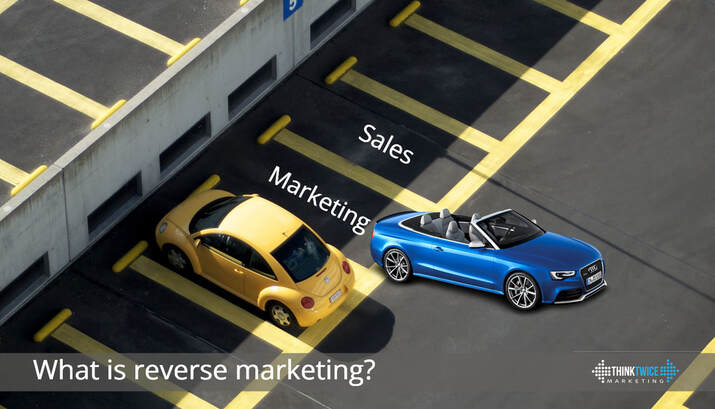
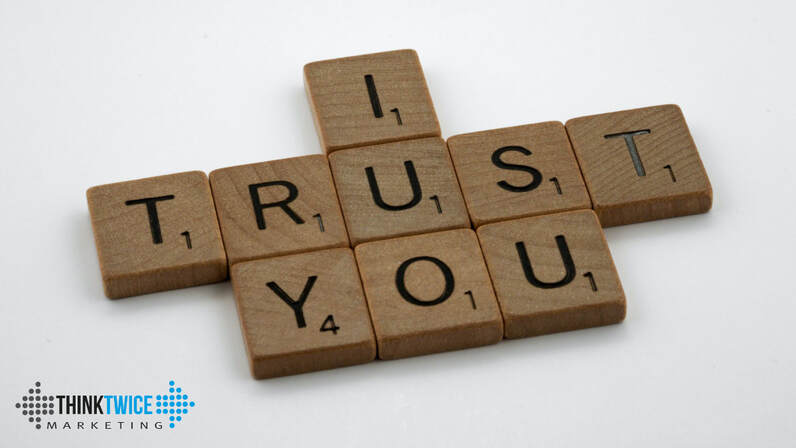


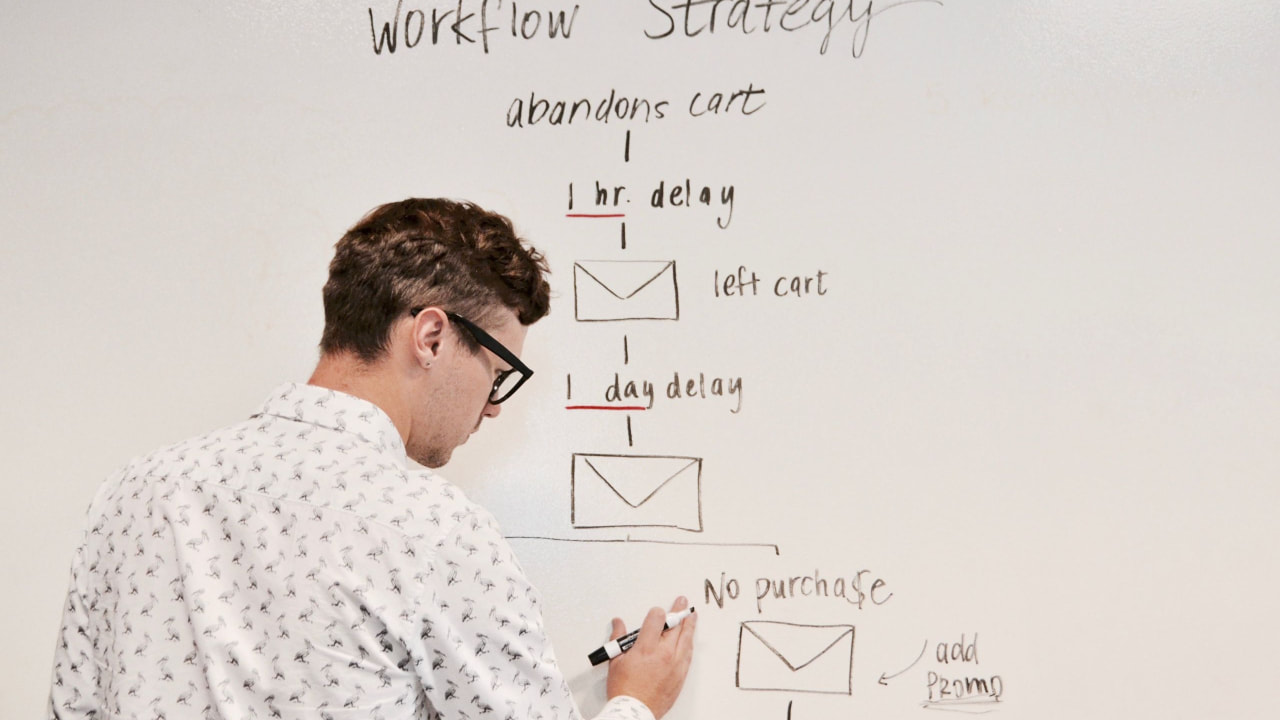

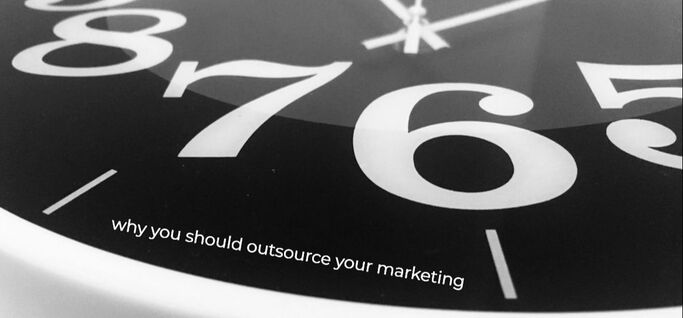



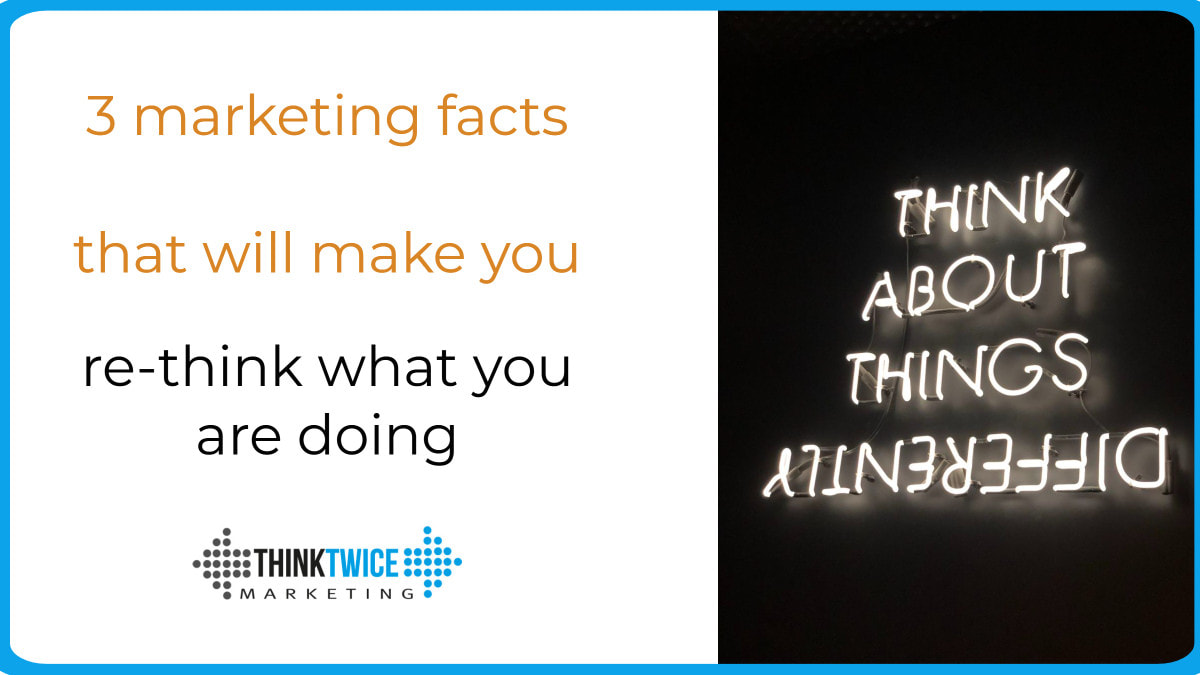

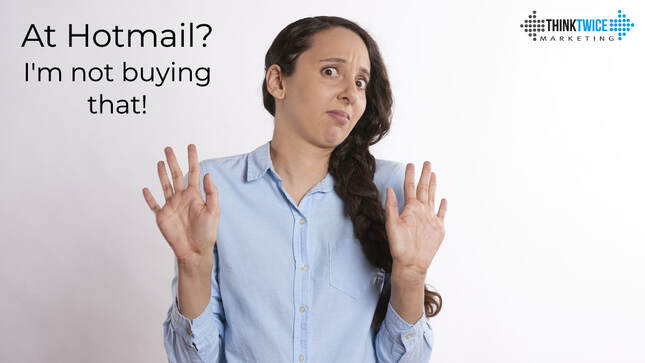

 RSS Feed
RSS Feed